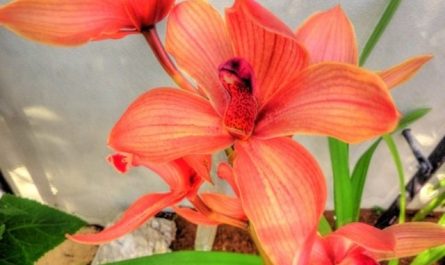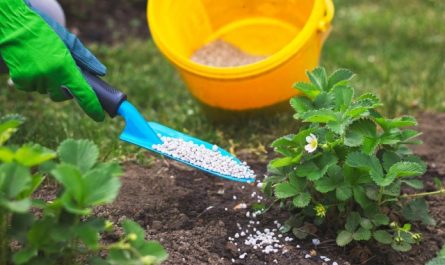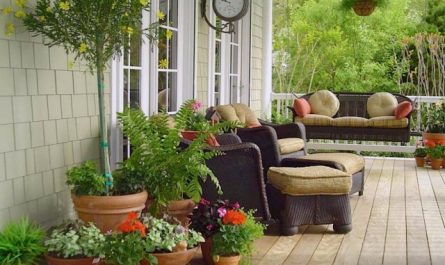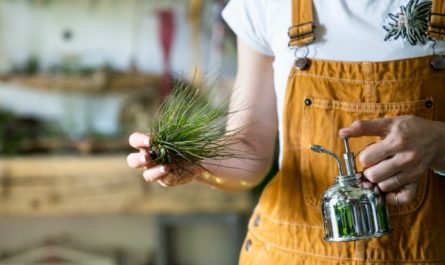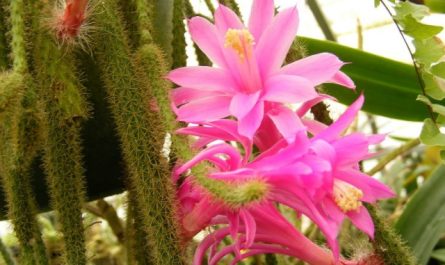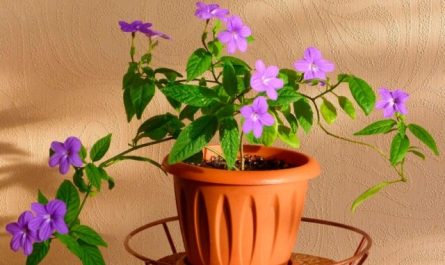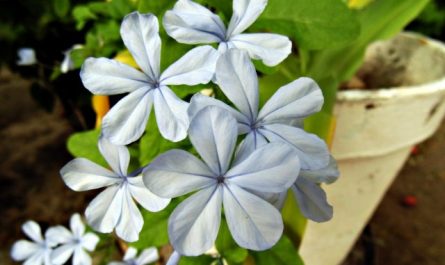Garden ivy can withstand almost any winter, no matter how severe, and retains its beauty even under snow. When moving indoors, ivy largely loses its endurance and invulnerability, and begins to depend on care for everything. When buying a plant as a reliable background decoration, no problems are expected from it, and that is often why carelessness is allowed that can destroy the plant. It is not at all difficult to understand why ivy withers and fades. This is always caused by mistakes in choosing a place and very serious mistakes in care.

1. Indoor ivy is not garden ivy!
Special varieties of common ivy and various hybrids have been bred for indoor cultivation. They can offer a choice not only between different variegation options and color shades, but also by leaf shape – from classic to elongated, deeply cut, arrow-shaped and even lanceolate.
But no matter what ivy variety is chosen, this evergreen vine remains one of the easiest to grow species for quick landscaping. Climbing any supports and surfaces thanks to aerial roots, ivies show amazing talents in creating green walls and screens, are graceful, cover the area that is given to them, and are easy to contain.
When classifying ivy as a Spartan indoor plant, one must remember the principle of conventionality. Indoor ivy differs significantly from the basic form of common ivy, which can, indeed, grow in almost any conditions. But sellers and fans of the plant often forget to mention this. Meanwhile, the rule that the more spectacular and unusual the ivy, the more demanding it is to conditions and care is one of the main secrets of growing indoor ivy.
When choosing a variety from among the unusual and bright, it is worth taking a close look at the plant and asking about its features. After all, if you miss important points in growing, you can simply destroy the ivy through ignorance.

2. Gradual adaptation
Gardeners who buy ivy as one of the most reliable and virtually maintenance-free species for vertical gardening or creating green cascades often face disappointment. When brought to a new home, adult ivy quickly loses its decorative appearance and dies, seemingly for no apparent reason. In fact, the reason for the loss after purchase is simple – stress.
Ivy does not like changes, especially abrupt ones. The larger the ivy, the worse it adapts to a new home. And if you soften the conditions of the first few weeks, provide coolness, soft light, high humidity, careful watering, stress can be reduced. If you put the ivy immediately in a hot and dry room, in unusual lighting, while overwatering or overdrying the soil, do not be surprised that the plant withers before your eyes.
3. Ivy’s shade tolerance is a dangerous myth
When ivy is considered a plant that can please even indoors, indoor varieties are simply confused with garden plants. The latter, indeed, are distinguished by their enviable shade tolerance. All variegated forms and varieties of ivy are much more light-loving. It is better to place them in a well-lit place with soft, diffused lighting or at least in light partial shade, otherwise it will be almost impossible to preserve the characteristic patterns and shape of the leaves, density and growth rates.
Ivy plants that suffer from insufficient lighting quickly shed their leaves, stretch out, and individual vines begin to dry out. The problem of indoor greening can be solved by choosing dark green varieties, compensating supplementary lighting, or gradual adaptation from a young age (when grown from cuttings, ivy can be trained to more moderate lighting).
With ivy, you also need to be wary of direct sunlight, under which the plant not only suffers from burns, but also loses its characteristic colors.

4. Temperature, ventilation and humidity
Ivy in living rooms or offices does not lose its love for cool temperatures. And it is not only that ivy prefers to spend the winter in a temperature of about 12 degrees, and not in the heat. Even in spring and summer the plant will prefer coolness, moderate temperatures of about 18 degrees.
But since it is extremely problematic to create such a regime, it is important to compensate for the living temperatures for ivy both in summer and winter by an equal increase in air humidity or an increase in the frequency of ventilation, or better yet, both indicators at the same time. Usually, this plant is limited to simple spraying, which ivy loves. In summer, you can simplify care by taking the plant out into the garden or at least onto the balcony.
5. The moisture-loving nature of ivy should not be underestimated
The nature of this unique liana should not be forgotten. In room conditions, drying out of the soil even in cold temperatures in winter can be fatal for ivy. And constant skipping of watering during the period of active growth will cause the vines to die off and the leaves to fall off. Ivy is watered abundantly, keeping the substrate constantly moist, not allowing it to dry out deeper than 3 cm. In winter, watering is reduced in accordance with the temperatures of the content.
Ivy is not afraid of short-term over-watering, but dampness and stagnant water are unacceptable for it, since ivy cannot be called invulnerable to rot. One of the reasons for problems with this plant is watering with soft or cold water, which can lead to serious damage to the roots.
6. Moderate but mandatory feeding
Depleted soil, lack of nutrients and overfeeding lead to increased vulnerability of ivy to pests and diseases, growth disturbances, loss of decorativeness. They need a “golden mean”. Fertilizers are applied not only during the period of active growth, but also in late autumn or winter.
Weekly fertilizing in spring and summer, monthly fertilizing in autumn and winter requires halving the standard portion of fertilizers. For ivy, you need to choose a fertilizer for decorative foliage plants. Since ivy is sensitive to excess fertilizer, it is better to fertilize after preliminary watering.

7. Ivy loves to “settle down”
It is better to avoid frequent and abrupt changes in conditions with ivy. Even temperature changes should be as smooth as possible, otherwise damage to the leaves cannot be avoided. The rule of constancy also applies to replanting. Ivy is replanted no more than once every 1-2 years, allowing the ivy to fully master the substrate in the previous container and minimizing injuries by transshipment into a pot 3-3 cm larger than the previous one.
And if ivy is used to decorate walls, then replanting is delayed as much as possible, replacing the top layer of the substrate more often. If the plants die after replanting, the problem is most likely with the deepening: ivy cannot be dug in for stability, it is always installed at the same level.
Ivy can be destroyed by the wrong soil and lack of drainage. Only slightly acidic, loose, nutritious substrate is suitable for them (the ideal option is soil mixtures for begonias or Saintpaulias).
8. Reasonable formation
The more freedom you give this plant, the more active and lush it grows. Flexible thin shoots of ivy are very easy to direct and cling to supports, so wrapping, tying and shaping without pruning should be a priority.
It is also easy to control ivy by pinching. But if the vines have stretched too much or have been damaged, they are shortened by no more than 1/3 of their length. But the oldest, damaged, dry branches are best cut mercilessly, to the base.

9. Diseased ivy is difficult to save
Ivy rarely gets sick, especially when choosing resistant modern varieties, but if problems arise, it is very difficult to cope with them. It is much easier to prevent infection, providing at least minimal care and average conditions.
Ivy plants are at risk of gray mold when the soil is overwatered, which easily spreads along both the roots and shoots. The combination of excessive dampness and cold is especially dangerous. If spots and traces of rot appear, the damaged parts must be removed.
Pests on ivy – scale insects, spider mites and thrips – always manifest themselves with similar signs: yellowing and falling leaves, depressed condition and slow growth. And always under the wrong conditions of maintenance or violations of care. Usually it is quite easy to notice insects with the naked eye: scale insects attached to the leaves are accompanied by a sticky coating, spider mites leave the finest webs, and thrips are recognized by white strokes and spots on the upper side and reddish on the back of the leaves.
But manual removal of pests is very difficult due to the large leaf mass, the presence of aerial roots and inconvenient inspection on supports. Simple measures – washing with a soap solution, increasing humidity, lowering the temperature and maintaining the cleanliness of the greenery – will not do. Treatment with insecticides (Fufanon, Karbofos, Aktellik, etc.) should begin as early as possible. If 2-3 procedures do not give results, it is better to destroy the plant, growing a replacement from a cutting.



